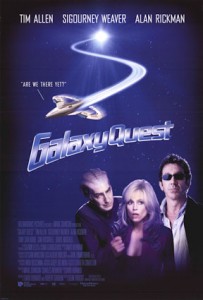“Tight plotting” is the term I use where everything is necessary to the plot and the story moves along without tangents or superfluous references. I didn’t invent the term, but it’s not yet in widespread use.
First let’s examine the opposite—loose plotting—and we’ll be able to make the contrast. Loose plotting is more common in novels than in short stories, and somewhat common in movies. Why? In a novel there’s an expectation of length, and a tendency for the writer to get a related idea and decide to stick it in the manuscript, even if it has to be force-fit. The creation process for movies is more collaborative than that of books, and with many cooks there’s a tendency to lose focus and spoil the broth.
 To illustrate, consider two movies, both rather silly comedies. To me, the movie Airplane! (1980) is an example of loose plotting. It’s filled with funny little gags that bear little relation to the main plot and don’t advance the story. The movie may be funny, and it was a financial success, but it is not an example of tight plotting.
To illustrate, consider two movies, both rather silly comedies. To me, the movie Airplane! (1980) is an example of loose plotting. It’s filled with funny little gags that bear little relation to the main plot and don’t advance the story. The movie may be funny, and it was a financial success, but it is not an example of tight plotting.
By contrast, the movie Galaxy Quest (1999) has a far tighter plot. There are humorous gags and lines, and some subplots, but nearly all the action and dialogue moves the plot along.
 One can argue which movie is funnier, and audiences might be more forgiving with comedies if the jokes are comical enough. But it seems to me that Galaxy Quest has the more focused, the more integral, of the two movies’ plots.
One can argue which movie is funnier, and audiences might be more forgiving with comedies if the jokes are comical enough. But it seems to me that Galaxy Quest has the more focused, the more integral, of the two movies’ plots.
In written fiction such as short stories, novellas, or novels, I believe it’s important to keep the plot tight. Resist the temptation to “work in” what seems to be a great, though tangentially related, idea. Keep asking yourself if each scene, each character, each paragraph and sentence, advance your plot in some important way to keep the story moving. It’s okay to have subplots, but make them related to and supportive of your main plot, and don’t linger too long on any one subplot.
The editing process is where you’ll have the best chance to tighten your plot. You have to be brutal in cutting out unnecessary parts and words. As we say in the biz, you have to “kill your darlings.” Loose plotting is indicative of lazy editing.
Don’t think your readers can’t recognize loose plotting. Once they start your story and latch on to the main plot, they want to follow it to see what happens. They’ll detect any deviation from that plot. At first they’ll wonder how this new path is connected to the main plot. They may forgive an occasional tangent if it’s short. But with each digression you run the risk of boring the reader. A bored reader probably won’t finish your story, and definitely will not read your other stories.
For more information on tight plotting, and overall tight writing, see this great blog post by Margot Finke.
If there’s one writer who really strives to keep his plots tight, it’s—
Poseidon’s Scribe
